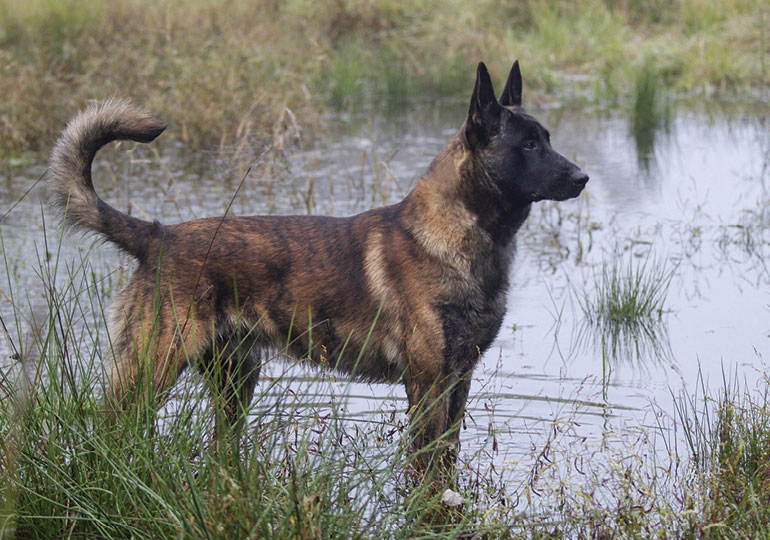Dutch Shepherd
Breed Details
Size:
Exercise Requirements:
Grooming Requirements:
19-34 Kg (Approx)
11-14 years (Approx)

Appearance
A medium sized, middle weighted, well-muscled dog of powerful and well-balanced structure. A dog with lots of endurance, a lively temperament and an intelligent expression. Depending on the coat the breed is distinguished in the following varieties; short, long and wire haired.
History
The Dutch Shepherd is a herding dog of Dutch origin. They were used by shepherds and farmers who needed a versatile dog, with few demands, and a dog that was able to adapt to a harsh and meager existence.
Originally the main function of the Dutch Shepherd Dog was that of a shepherd’s dog in the countryside. From early times, the Dutch had an arable culture that was, among other things, maintained by flocks of sheep. The dogs had to keep the flocks away from crops, which they did by patrolling the borders of the road and the fields. They also accompanied the flocks on their way to the common meadows, markets and ports.
At the farm, they kept the hens from the kitchen garden; they herded the cows together for milking and pulled the milk carts. They also alerted the farmers if strangers entered the farmyard. Around 1900, sheep flocks had for the greater part disappeared in the Netherlands. The versatile skills of the Dutch Shepherd Dog made him suitable for dog training, which was then starting to become popular. Thus he started on a new career as a police dog, as a search and tracking dog and as a guide dog for the blind. He is however, still capable of herding sheep. The breed’s first standard dates from 12 June 1898.
Temperament
Very loyal and reliable, always alert, watchful, active, independent, with persistence, intelligence, prepared to be obedient and gifted with true shepherding temperament, The Dutch Shepherd Dog works willingly together with its owner and deals independently with any task which is assigned to him.
When herding larger flocks he must have the capacity to work together with several other dogs.
Care/Grooming
The short-haired variety needs occasional combing, with the exception during the shedding period in the spring and fall when a daily thorough brushing is needed. The long-haired variety needs to be groomed about once a week, or more frequently depending on work and environment. The rough-hair variety needs to be thoroughly brushed once a week, and twice a year the dead hair will need to be hand stripped.
Breeders
Currently no Breeders in SA for this Breed

